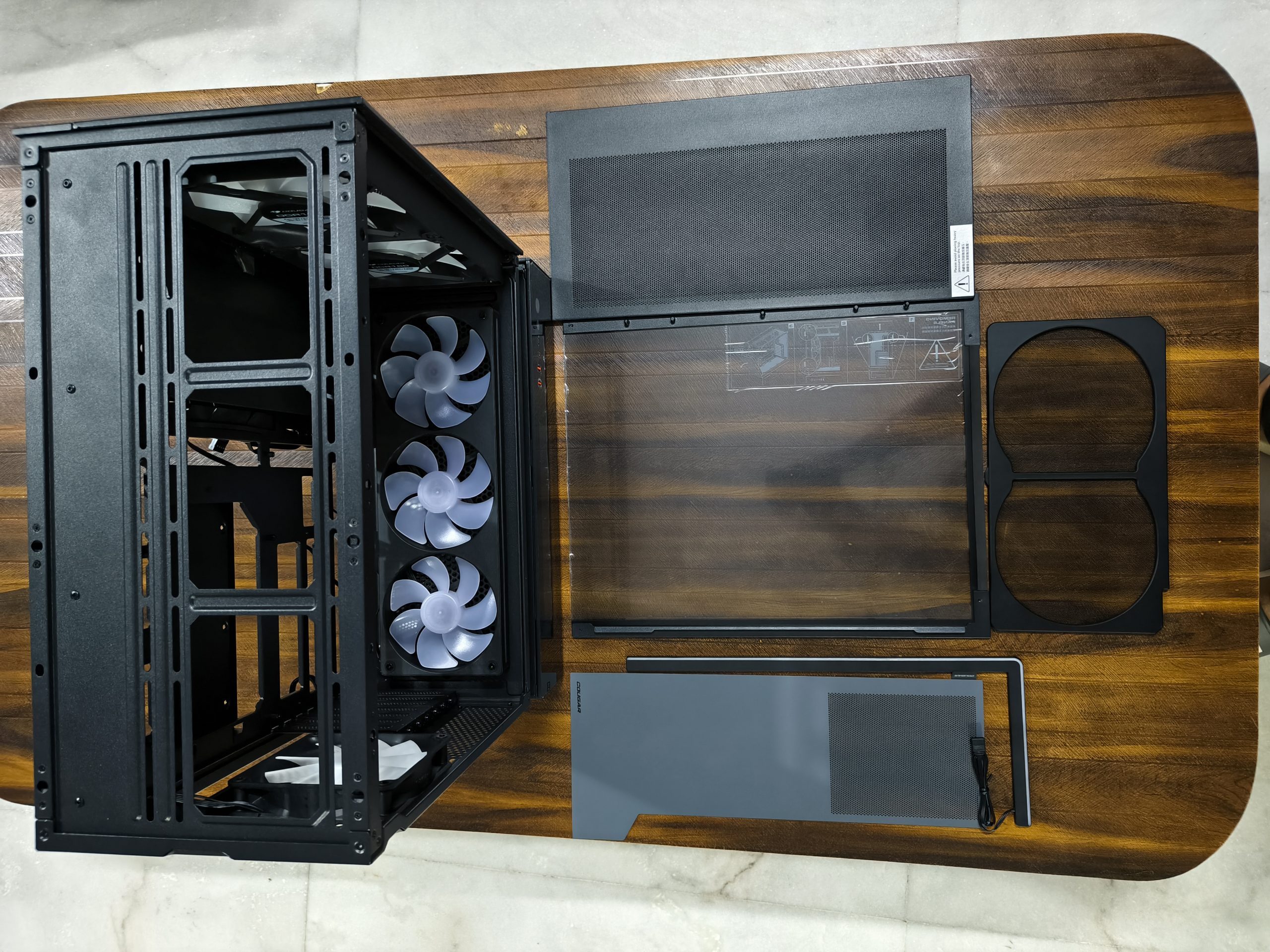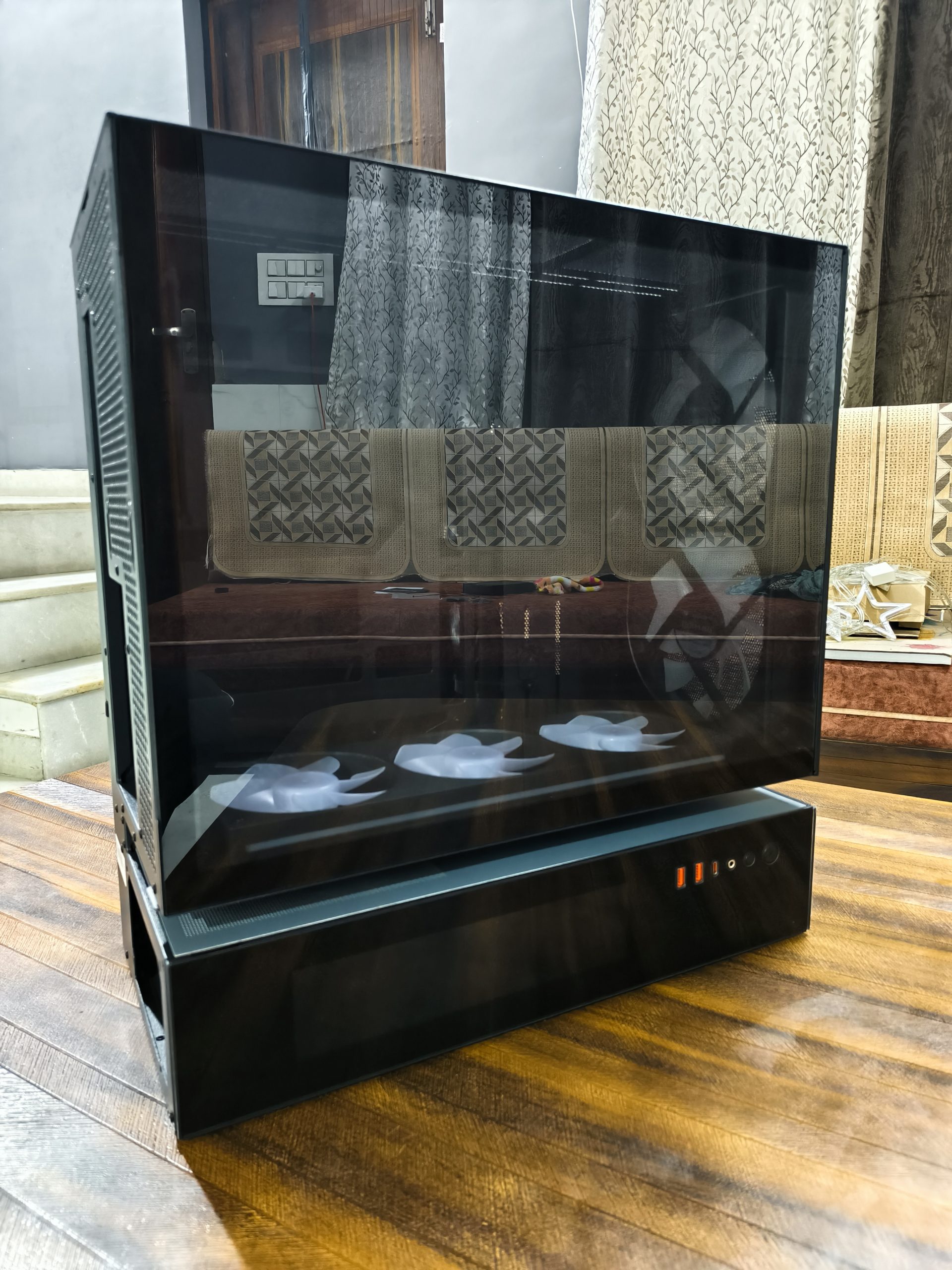Cougar CFV235
Type
PC Case
Price
Starts at $139
The Cougar CFV235 mid-tower case brings an innovative design to the table with its separate chambers for the main area and the PSU shroud. This new release has already impressed many with its superior build features and is available in various versions, including options with glass and mesh panels, along with a dedicated LCD monitor at the base. Today, we explore the CFV235 Mesh Vision model, which combines a mesh panel with an LCD display. We’ll delve into its component compatibility, assembly process, and the cutting-edge features that Cougar promises.
Technical Specifications
| Product Name | CFV235 / CFV235 (White) | ||
|---|---|---|---|
| Case Form Factor | Mid Tower | ||
| Motherboard Type | Mini ITX / Micro ATX / ATX / CEB | ||
| Dimensions (WxHxD) | 235 x 493 x 460 (mm) 9.3 x 19.4 x 18.1 (in) |
||
| I/O Panel | USB 3.2 Gen 2×2 Type-C x 1, USB 3.0 Type-A x 2, 4 Pole Headset Audio Jack x 1, RGB Button | ||
| 3.5″ Drive Bay | 2 | ||
| 2.5″ Drive Bay | 2+2 (converted from 3.5″ drive bays) | ||
| Expansion Slots | 7 | ||
| Cooling Fan Support | Top | 120mm x 3 / 140mm x 3 | |
| M/B Side | 120mm x 2 | ||
| Bottom | 120mm x 3 | ||
| Rear | 120mm x 1 | ||
| Pre-installed Fans | M/B Side | Unity 240 ARGB PWM Reversed fan x 1 | |
| Rear | 120mm ARGB PWM fan x 1 | ||
| Speed | Unity 240 ARGB PWM Reversed fan: 700-1600 RPM ±10% 120mm ARGB PWM fan: 500-1400 ± 10% RPM |
||
| Connector | 5V 3 Pin (ARGB) / 4 Pin PWM (Fan) | ||
| Maximun Number of Fans | 9 | ||
| Water Cooling Support | Top | 360mm / 280mm / 240mm / 140mm / 120mm | |
| Rear | 120mm | ||
| Aurora LED Strip | Yes | ||
| PWM and RGB hub Sync with M/B | Yes | ||
| Max. Graphics Card Length | 430 (mm) / 16.9 (in) | ||
| Max. CPU Cooler Height | 175 (mm) / 6.9 (in) | ||
| Max. PSU Length | 200 (mm) / 7.9 (in) | ||
A Close Look at the Design

The CFV235 boasts two chambers, separating its PSU chamber from the main area to allow a floating-style design. The interior is quite spacious, and if you have taken a look at the specs, it can accommodate long graphics cards and has sufficient width for tall CPU coolers.
The chassis features a large, tempered glass side panel that is tool-free. To open it, one has to simply detach it from the top left corner, and the same mechanism is available for the other side panel. The second panel is, however, fully metal and one of the sturdiest you will find. It’s uses a 1.5mm-thick steel frame, which doesn’t wobble and is attached to the case much more firmly than the Airface ECO RGB. Plus, it has a ventilated area that allows more airflow.

The motherboard tray isn’t your traditional one, but has a lot of cutouts, which you probably think are for wiring and stuff. However, the case supports motherboards with connectors at the back such as ASUS BTF boards, allowing compatibility for both regular and reverse connector motherboards. So, essentially, it can hide almost all the cables from sight for a nice and neat build.
As you can see from the images, the case comes with 6x pre-installed fans, offering 2x 160 mm ARGB PWM fans at the front, 3x 120 mm ARGB PWM fans at the bottom, and one at the rear. That’s more fans than the Airface ECO RGB or Omnyx, and almost eliminates the need to buy chassis fans separately, except if you want to populate the top panel as well. For users who will opt for an AIO cooler, the top side can be used for the radiator instead.
You can find a dust filter in most places, including the front, under the base of the top chamber, and one at the top of the PSU chamber, and also at the top panel of the case. All these filters are magnetic, but unlike the Airface ECO RGB case, the front dust filter is at the back of the front fans, and you need to remove the side panel to access it. In Airface, it was hassle-free since you can easily remove it without accessing the interior or removing the front panel. Still, it’s not a big issue, but it’s more of a convenience for a lazy person like me.





